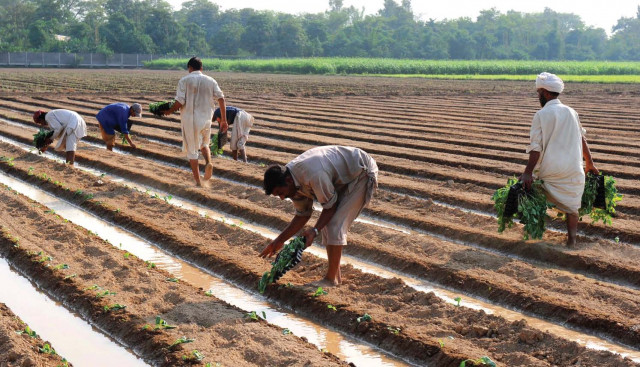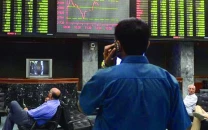Gross domestic product: Agriculture’s share drops from 60% to 22%
Large-scale migration to cities and lack of technology cause decline.

The share of agriculture in gross domestic product (GDP) dropped from 60 per cent in 1950 to around 22 per cent in 2010 despite a significant increase in production of major crops.
On the other side, the contribution of manufacturing and services to the GDP and employment generation has shown a remarkable surge.
These were the observations made at the conclusion of an international conference titled “Urban and peri-urban agriculture – empowerment and value chain management”, organised by the International Centre for Development and Decent Work, a global think tank, in collaboration with the Office for Research Innovation and Commercialisation, University of Agriculture Faisalabad, here on Friday.
Department for Agriculture Economics Professor Dr Muhammad Ashfaq said in 1947, the agriculture sector employed 65 per cent of the labour force and accounted for more than 90 per cent of export earnings.
At that time, out of the total population of 33.2 million, more than 28 million (85%) were living in rural areas. However, owing a virtual collapse of infrastructure, weak administrative capacity, large-scale migration of people and use of traditional practices, the agriculture production stood very low, leaving rural people highly vulnerable and poor.
Ashfaq said rising incidence of rural poverty, low farm incomes and slow and uneven growth of non-farm rural sector had been forcing the fast growing rural population to move to urban areas.
Stressing the need for boosting per acre crop yields, Pakistan Agricultural Research Council (PARC) Chairman Dr Iftikhar Ahmad called for accelerating efforts to persuade the farmers to adopt modern technology and apply research work.
“Our linkages with farmers are weak, leading to low production,” he said and cited the example of Brazil Rural Development Programme which brought tangible results and could be followed.
Professor Dr Andreas Buerkert from Germany said urban and peri-urban agriculture could make important contribution to supplying food and income opportunities to the rapidly growing urban population of developing countries.
MPA Rana Muhammad Afzal also made the case for relocating industries outside of cities, saying their waste was playing havoc with people’s health and lives. Praising the steps taken by the government for the development of rural areas, he said still much needed to be done to stem the intensified migration to the cities.
Increasing growth of population was also termed a challenge as population soared to 177 million compared to 35 million at the time of independence.
Published in The Express Tribune, October 22nd, 2011.


















COMMENTS
Comments are moderated and generally will be posted if they are on-topic and not abusive.
For more information, please see our Comments FAQ